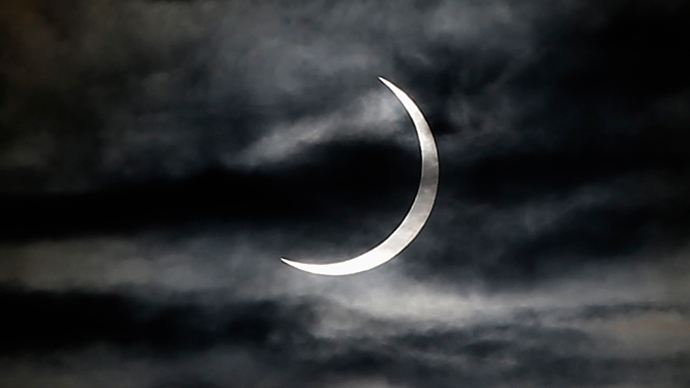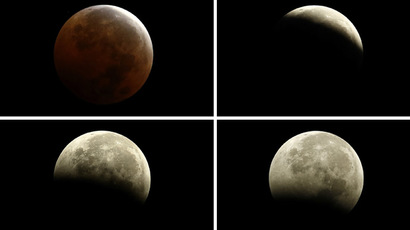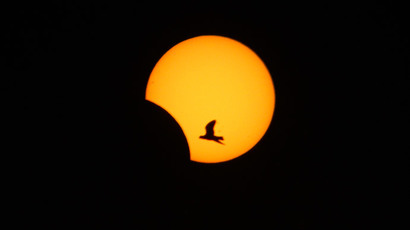Solar eclipse next March threatens Europe solar grid, temp ‘may drop 6C in 30 minutes’

When an almost total solar eclipse starts on March 20, 2015 and casts an umbra on northern Europe, it may face an unprecedented test of its electricity grid due to the massive development of solar power production.
The warning comes from the French power grid RTE, which said
Friday that Europe must be prepared for the event.
"The passage of this shadow will considerably reduce
photovoltaic power production," Dominique Maillard, the head
of RTE, told reporters during its winter outlook presentation, as
cited by Reuters. "According to our calculations, the impact
could be a drop in production of as much as 30,000 megawatts
across Europe, it's the equivalent of a six degrees Celsius drop
in temperatures in half an hour."
The last time Europe experienced a similar plunge into darkness
was in August 1999, long before the Fukushima disaster scare and
development of better solar panels led to a boom of photovoltaic
electricity. European solar power leader Germany currently has
nearly 37,000 MW of installed solar capacity, which accounts for
almost 30 percent of domestic consumption. Compared to Germany,
France has been slow to adopt the technology, with its total
installed solar capacity standing at 5,000 MW – a mere 1 percent
of the country’s total energy generating capacity.

The danger posed by the eclipse is not so much from lower output
from solar panels but rather from the rapid decease and increase,
which would happen if the weather on March 20 is good.
"If it's a cloudy day, it will go almost unnoticed. We will
only know almost at the last minute, but that doesn't prevent us
from getting our contingency plans ready," Reuters reported
Maillard as saying.
To prepare the plans RTE wants to coordinate back-up capacity
together with other European grid operators.
The eclipse is expected on the morning of March 20, 2015. For
roughly an hour, direct sunlight will be blocked over Norway and
other northern European states. For roughly an hour and a half,
it will be visible in other parts of Europe and North Africa.














